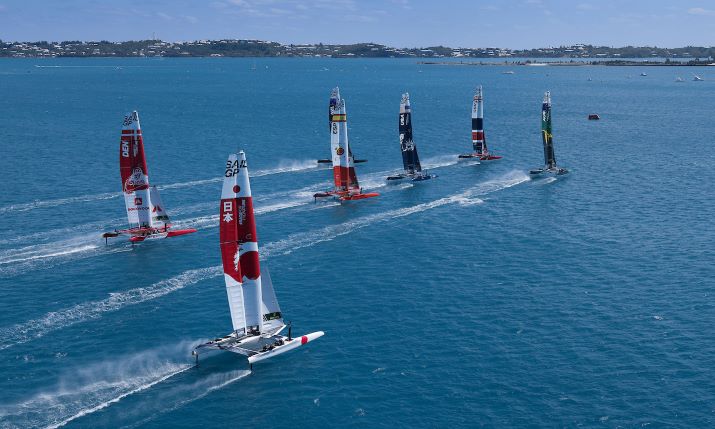Seizing the opportunity: Chyron explores the emergence of cloud-based live production tools
 By Carol Bettencourt, Chyron VP of marketing.
By Carol Bettencourt, Chyron VP of marketing.
At a high level, 2023 will be an interesting year, in part because we’ll see the convergence of three key ongoing trends.
The first of these trends is the mental shift that occurred with and through the pandemic. It’s the acceptance that in the emerging post-COVID landscape – both in production workflows and live sports events – we can and should be doing things differently. The origins of this new mindset go back to those early days, when instead of hearing, “you all have to be here at five o’clock, in this room, in your chairs, in front of your monitors”, production team members instead started to hear a new message; “you can’t be here”.
Everyone was faced with making this new and unexpected reality work. And, at first, it often didn’t quite work. Out of necessity, the process of dealing with distancing, travel limitations and other constraints accelerated the pace of change and investment in innovation. It helped people to become more open-minded about embracing new ways of working. This readiness to adopt new tools, technologies, workflows and even business models – this new mentality – is a critical trend that continues to shape sports production.
The second key trend that continues into 2023 is the shifting scope of rights holders, the most notable example being that National Collegiate Athletic Association athletes in the US now can sell rights to their names, images and likenesses (NIL). Legal shifts such as these change the game for broadcasters, teams, leagues and individual athletes.
A traditional rights holder is typically a major network with the financial means and the staff expertise needed to create a large-scale live production. But now, a team or even the individual players might hold some of these rights. Having those rights, however, doesn’t magically translate to having the financial clout or technical expertise and resources to leverage those rights effectively with fans and sponsors.
Cloud-based live production
And that’s where the third key trend going into 2023 comes into play. Already there is the right mentality for innovation, for embracing new technologies and workflows. And, with the expanding scope of rights holders, there is fresh opportunity for different people and groups to capitalise on popular sports teams and personalities. The emergence of cloud-based live production tools – with lower cost, broader functionality and greater ease of use than ever before – is the third element that will converge with those first two trends to make 2023 interesting! As those three trends come together – the right mentality, the right opportunity and the right technology – it will be exciting to see what the year brings.
Consider a running back in a collegiate football programme. He’s No. 25, and he now has the right to his own likeness. Who’s to say he can’t have his own channel, where he offers fans short clips of himself practicing, hitting the weights, giving tips. He can use pay-as-you-go cloud-based technology to leverage his own brand and make it look as good as anything his fans will see on their favorite sports network. He can test the waters, see who might sponsor a bit of content, explore the growth and revenue potential without a significant up-front investment. This model is not only possible, but affordable.
As sports production continues to evolve in 2023, the industry is not going to tear down all of its brick-and-mortar control rooms or OB trucks, but there will be more and more cloud-based production. Consumers will see content by a greater variety of entities than ever before, and everyone will see more of a convergence between traditional, highly produced sports network programming and very real-time, social media interactions and platforms as people seek new platforms and outlets for their content.
Greater viewer choice
Looking to 2023 and beyond, another – and perhaps more surprising – change seems to be taking place. (And it does stem from a readiness for change, the opportunity for change, and the means to change, which mirror those three converging trends.) As time goes by and sports production becomes less dependent on expensive fixed infrastructure, it will be individuals who determine which athletes, teams and sports get watched.
For so long a self-perpetuating model has encouraged investment in specific sports, and in those multimillion dollar control rooms or trucks supporting production, thereby dictating what gets put on television and what gets watched. But when sports content can be produced outside that model, viewers gain the freedom to choose other programming. Going forward, it just might be that more people begin watching a greater diversity of sport, because now they can.

